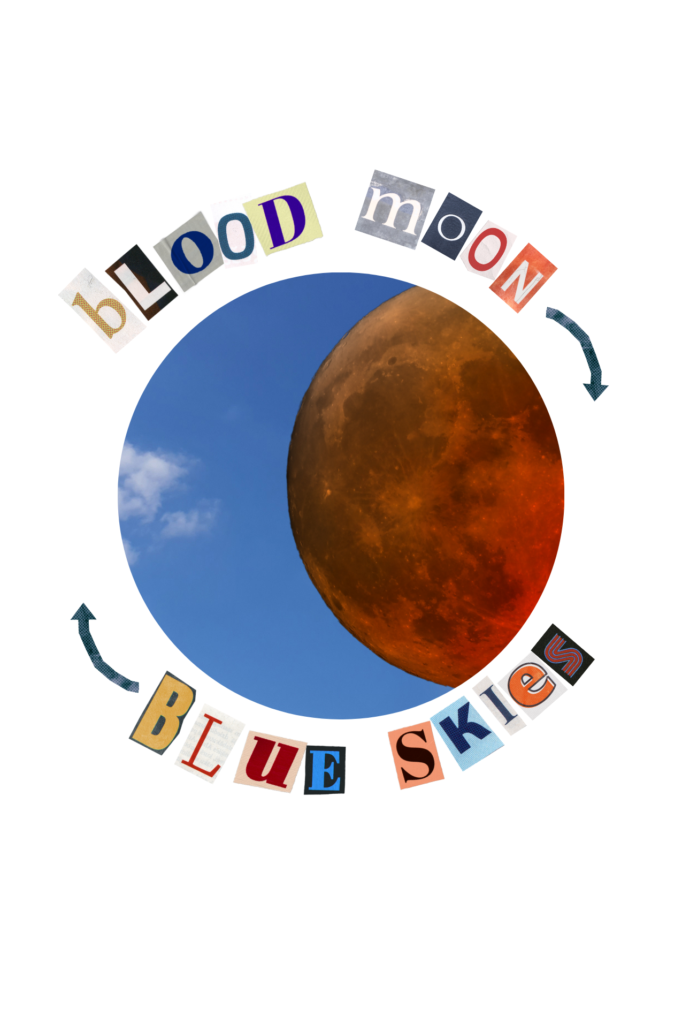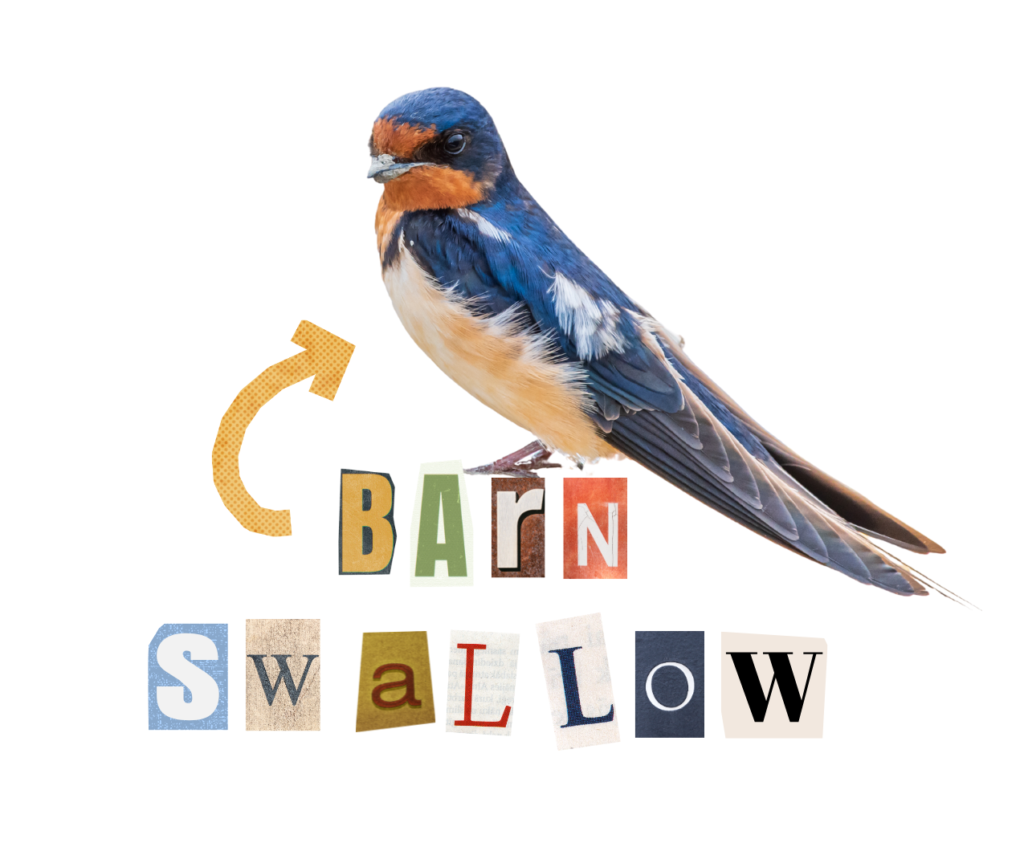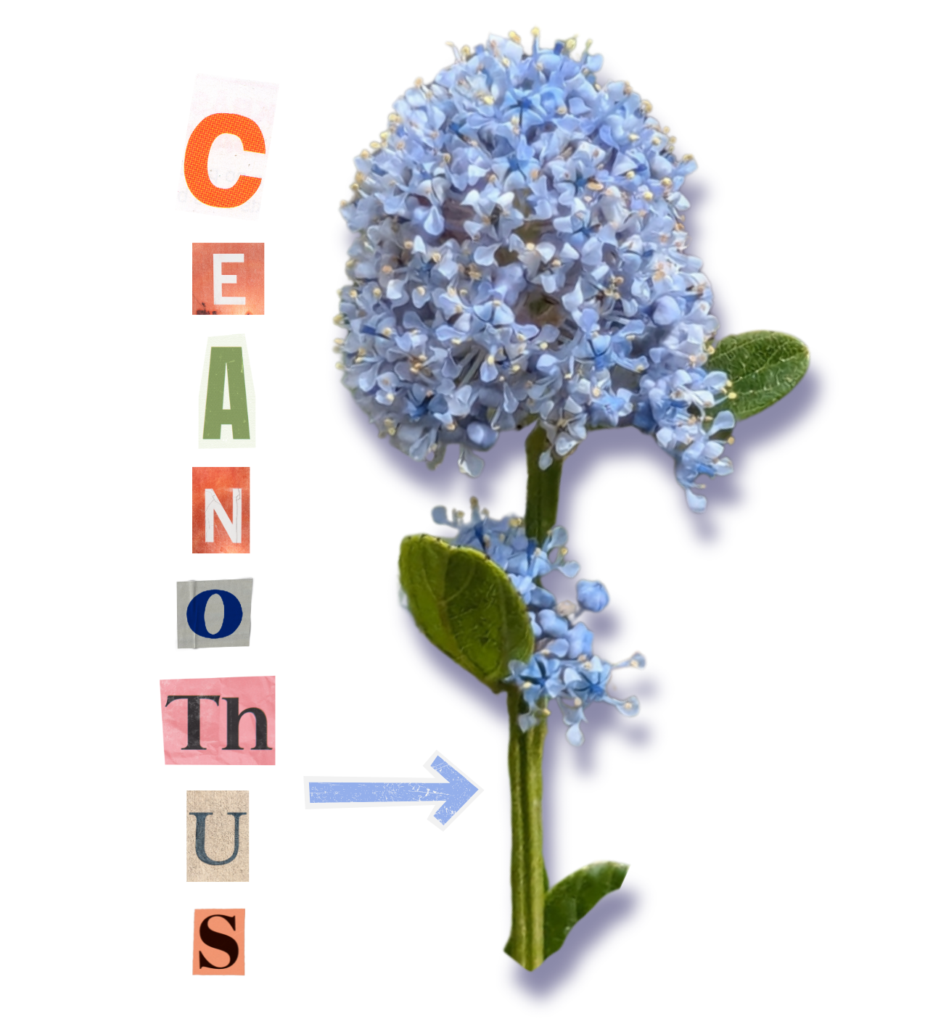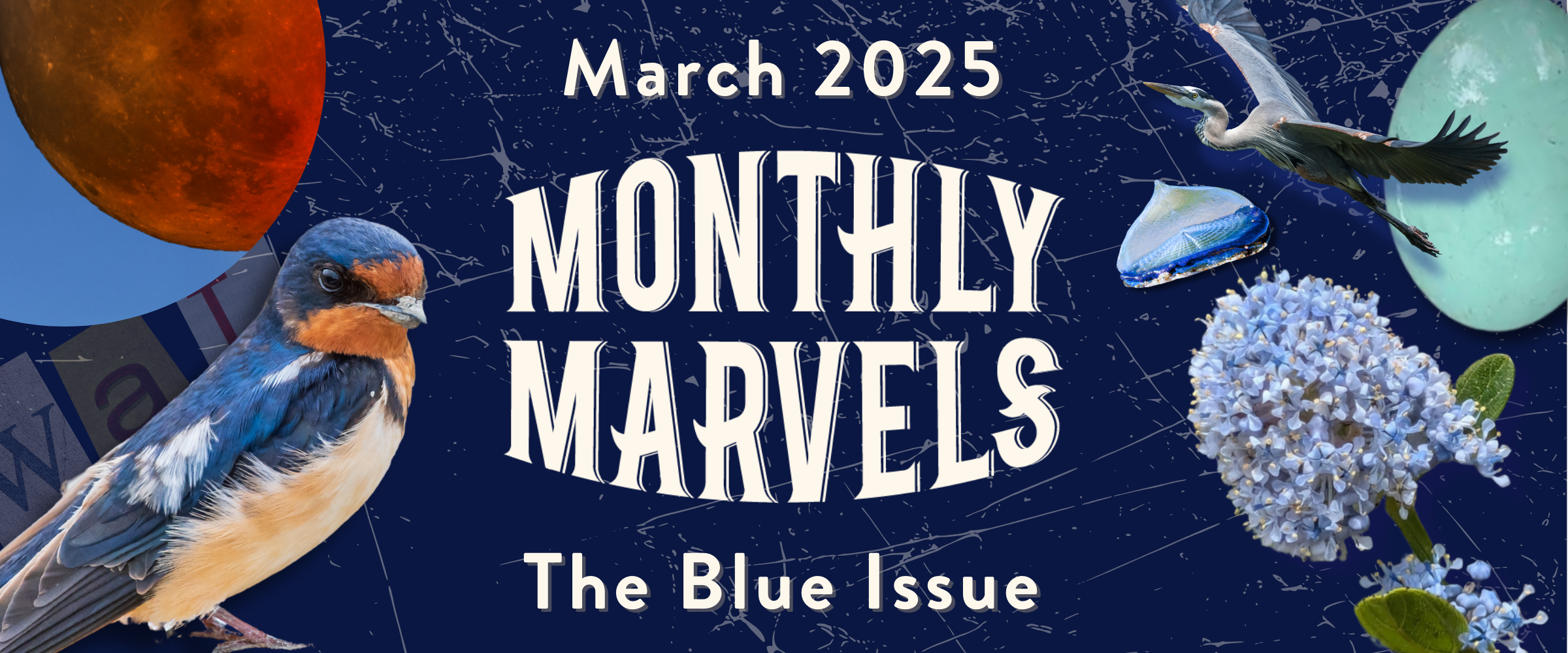March in Point Reyes has arrived in shades of blue! Blue can be a rare color in nature, but is abundant in our Point Reyes spring landscape. From the science behind cerulean skies to the return of our cobalt-backed companions, this is your guide to exploring the Seashore’s blue wonders.
March 13th – 14th:
Togetherness Through Blood Moons & Blue Skies
During splintered times, the celestial world has the power to bring us together through collective wonder.
In mid-March, thousands of eyes across North and South America, Western Europe, Western Africa, and Oceania will gaze up towards the same marvel—a total lunar eclipse, which will give rise to a blood moon. With the Earth shielding the moon from the sun’s bright rays, only light bouncing from the Earth’s atmosphere will be reflected onto the moon’s surface. As it moves through our atmosphere, shorter wavelengths (think: cool colors) are filtered out, leaving only longer wavelengths (think: warm colors)—causing the moon to appear a shade of orange-red which will be visible from many corners of the planet.
This is also the secret behind the blue of daytime skies; as longer red wavelengths are being filtered outwards, shorter blue wavelengths are scattered towards our eyes. How lucky we are to have these shared wonders—blue skies and blood moons and all—bringing us together.
While our blue skies are visible whenever Point Reyes’ clouds and fog scatter, the total eclipse will last for approximately 65 minutes. At Point Reyes (and everywhere on the West Coast), totality will occur from 11:26 p.m. to 12:32 a.m. Check out an interactive animation of what to expect during the lunar eclipse.


Throughout March:
The Blue Egg Conundrum
Across the Seashore, great blue heron rookeries are housing new life—clutches of delicate, pale blue eggs cradled in the birds’ carefully constructed nests.
Why did the herons’ eggs evolve to be blue, the rarest color in nature? Scientists have investigated the function of this special egg color in other species of birds, such as the village weaverbird of sub-Saharan Africa. For this species, they found that shell color is the result of a delicate balance between light and heat absorption. Less pigmentation and lighter coloration allows more UV light to shine through the thin shells, which could cause mutations or tissue damage in the growing chicks. On the other hand, more pigmentation and darker coloration may lead to hotter eggs, risking developmental abnormalities, bacterial growth, or hatching asynchrony. Though the opportunities for research on blue eggs are largely untapped, the findings from the study on weaverbirds could shed light on the workings behind great blue herons’ precious blue eggs—a March marvel finely-tuned over millennia of trial and error.
This March, catch a glimpse of great blue herons foraging at the Giacomini Wetlands or Estero de Limantour.
Throughout March:
By-the-Wind Sailors
Shiver me timbers! It’s a blue tide!
During spring and early summer months, Point Reyes seaside visitors may come across thousands of by-the-wind sailors (Velella velella) stranded on the beach. These blue jellyfish-like creatures use their translucent, triangular sails to free-float around the ocean. Their sailing routes are determined by prevailing winds, and a shift in these breezes can spell bad news for these little seafarers—if the wind is too strong in the wrong direction, they can get blown onshore and will die. Research suggests that these “wrecks” are associated with warmer ocean temperatures in the northern California current.
Depending on the winds, you might spot by-the-wind sailor “wrecks” at many beaches around the Seashore, such as Kehoe Beach or Limantour Beach.


Throughout March:
Our Blue-Backed Companions
Barn swallows—recognizable by their beautiful iridescent blue back feathers, rusty colored throat, and forked tail—start arriving at Point Reyes in March! For centuries, swallows have constructed their mud nests almost exclusively on anthropogenic structures, such as bridges, barns, porches, doorways, sheds, and culverts. This shared environment has led to a close interconnection between barn swallows and humans; we are linked across geographical, historical, cultural, and ecological landscapes.
Explore the barn swallow-human connection on “Rituals of this Good Earth,” an interdisciplinary, multimedia, and interactive website showcasing glimpses of human-swallow interactions of many forms across the world. Note: the website is browser-based and can be accessed from any laptop or desktop computer, but is not compatible with phones. Viewers should have their sound on and press the full-screen button in the lower right corner for an optimal viewing experience. Look for barn swallows around public buildings at the Seashore and Point Reyes Station.
Throughout March:
Ceanothus Blooms
Along Point Reyes’ coastal bluffs and shrublands, brilliant indigo blooms are bursting open, signaling the premiere of the blueblossom ceanothus’ (Ceanothus thyrsiflorus) springtime show. Blue ceanothus flowers contain saponins—a bitter-tasting chemical which plants (and even some marine invertebrates, such as sea cucumbers) use to protect themselves from disease and herbivores. When crushed and mixed with water, the saponins cause the flowers to lather up into a gentle soap. Blueblossom ceanothus is native to California; over millennia, it has carefully evolved its unique traits—including the ability to synthesize saponins and its gorgeous blue color—to thrive in Point Reyes ecosystems.
See ceanothus along the coastal bluffs of Tomales Bay, and on shrubland on hills and ridges, such as on Inverness Ridge Trail.

Credits for photos in collages: Blood Moon – Claudio Divizia; Blue Sky – Titus Group; Great Blue Heron – Harry Collins / Getty Images; Heron Egg – All About Birds Livestream; By-the-Wind Sailor – Avani Fachon / PRNSA; Barn Swallow – Robert Brown / Getty Images; Ceanothus – dsiripoonsup / iNaturalist



